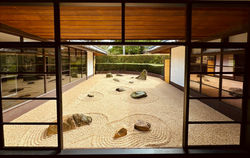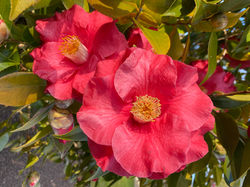
Admission Prices:
-
Adults $22.00
-
Concession $17.00
-
Family $52.00
-
Student $17.00
-
Locals $17.00
-
Children $12.00
-
Children under 5 years FREE
Please email info@cowragarden.com.au for tour group booking prices
We are a registered charity, and donations of $2 or more are eligible for tax deductions.
Opening Hours 8.30am- 5.00pm
 |  |  |  |  |  |  |  |
|---|---|---|---|---|---|---|---|
 |  |  |




Japanese Landscape and Garden design
There are a range of events and activities available to visitors to explore the Japanese landscape and garden design aspects of the Cowra Japanese Garden. These activities include:
-
Festivals such as the annual
-
Sakura Matsuri (Cherry Blossom Festival) held in September celebrating Spring ~ 27th September, 2025
-
Koyo Matsuri (Autumn Festival) held in May
-
Children's Day 2nd May
-
Koyo Matsuri Saturday 3rd May, 2025
-
-
One of the principal objects and purpose of the Cowra Japanese Garden and Cultural Centre is the promotion of Japanese Design (including landscape, garden and built form design).
The design of the garden is a copy of the first Japanese landscape garden (Strolling garden) built by the first Japanese Shogun Tokugawa Ieyasu. The Tokugawa Shogun ruled from Edo Castle from 1600 until 1868, when it was abolished during the Meiji Restoration. This period is known as the Edo period and gets its name from the capital city, Edo, which is now called Tokyo, after the name was changed in 1868
The Shogun captured two hundred and fifty of the warlords families and took them hostage in order to retain control and allowed The Warlords to return to visit their relatives every four years and were ordered to draw detailed maps of their travels, the combination of these forty nine maps formed the first geographical map of the landscape of Japan. From these maps The Shogun ordered a garden to be constructed to replicate the landscape of Japan in miniature.
The design of the Cowra Japanese Garden and the landscape incorporates the six elements in the design: - mountain, rocks, mountain waterfalls, mountain lakes, rivers turning into oceans and pine trees.
Visitors will experience and gain a greater understanding and appreciation of the Japanese garden and landscape design of the Edo period by walking the three kilometres of pathways designed to carry the visitor through the mountains of Japan, past the waterfalls in the mountains that flow into the mountain lakes and from there follow the water as it flows into the river and then the ocean.
The landscape design includes trimmed hedges and pine trees which are symbolic of the hills, reaching from the mountains to the ocean.
Japanese Built Form design
Cowra Japanese Garden and Cultural Centre organises a range of events and activities available to visitors to explore and promote the built form design incorporated into the Cowra Japanese Garden.
These activities include:
-
Guided tours of the built form design incorporated into the design of the Garden
-
Regular Garden Talks by Directors and staff on aspects of Japanese built form design
-
Ceremonies conducted in the Tea House and Edo Cottage
-
Regular talks given by our Education staff exploring and highlighting the built form design of the Edo Period replicated in the Garden
-
Two large models of Japanese traditional buildings are used to demonstrate various features of the Japanese built form design.